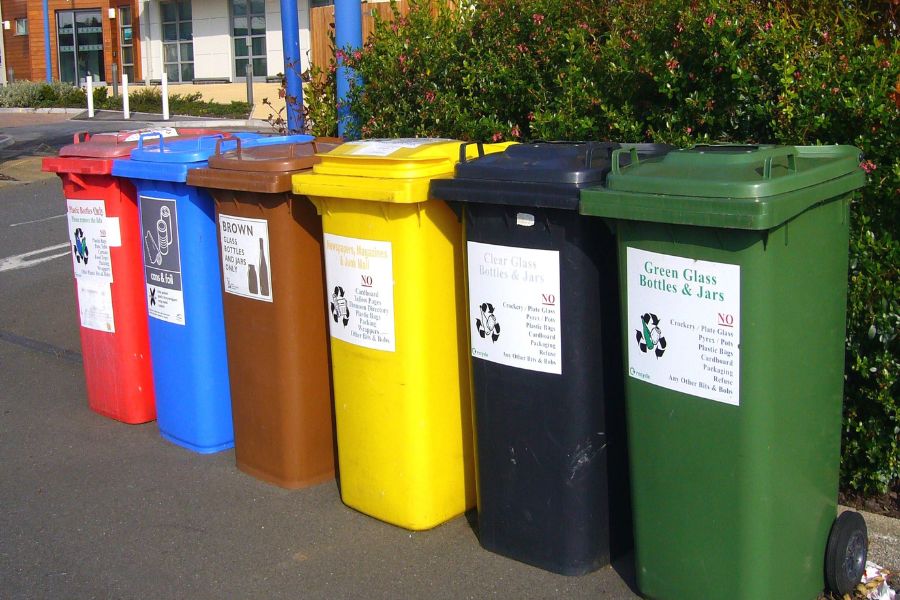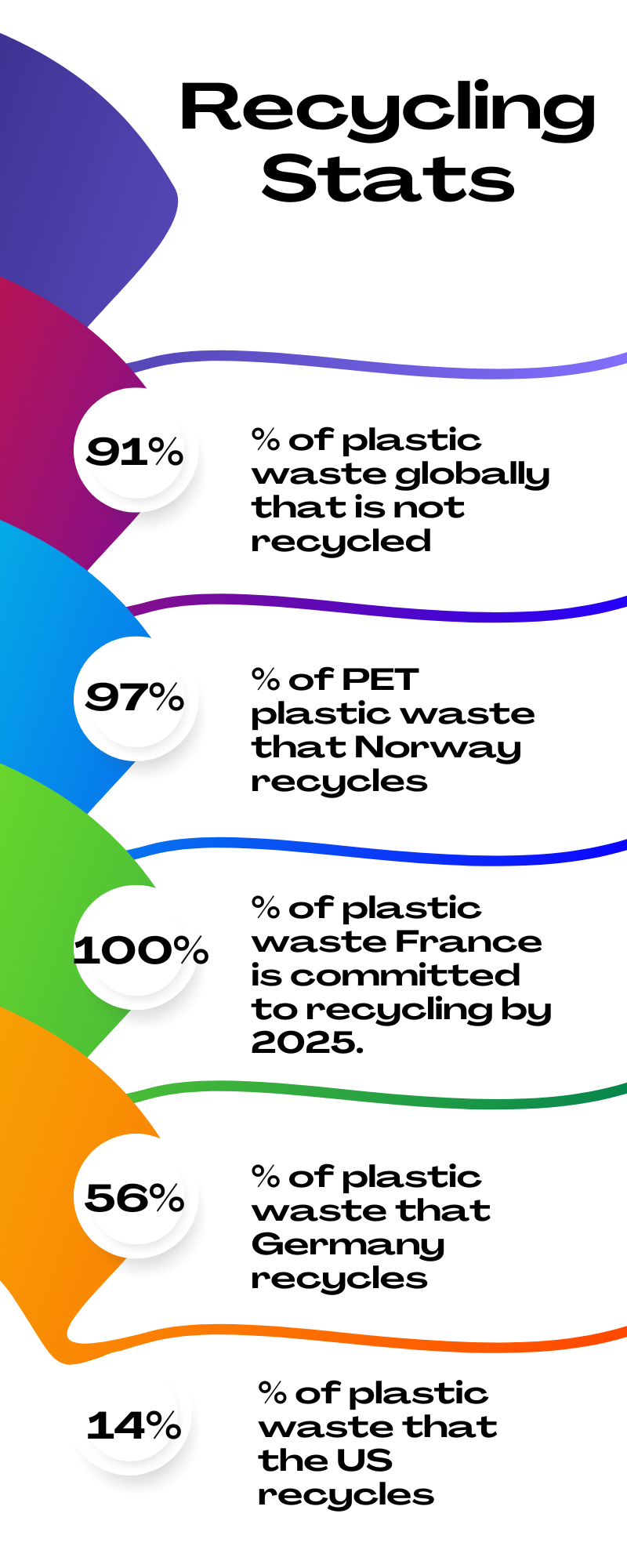Plastic recycling, which is the reprocessing of plastic waste into new products, could be considered one step to try to reduce the plastic pollution problem. Recycling plastic minimizes the demand for virgin materials (Miller, 2021). When performed correctly, it can reduce dependence on landfills and protect resources and the environment from plastic waste and greenhouse gas emissions. Although plastic recycling rates have increased in the past years, they are still behind those of other recyclable materials (i.e., aluminum, glass, paper) (Al-Salem, Lettieri, Baeyens, 2009).
There are seven different types of plastic and not all of them can be recycled. The following are recyclable plastics: soda and water bottles, peanut butter jars, salad dressing and cooking oil bottles (all of these have the resin code # 1); milk and juice jugs, laundry detergent, shampoo bottles, yogurt tubs (all of these have the resin code # 2). Other take-out containers, plastic bags, plastic wrap, disposable diapers, and other items have been recycled as well. When recycling all these containers, they should be clean because any dirt or food waste can contaminate other recyclable plastic (Cho, 2018).
Individuals can also donate bubble wrap and packaging peanuts (both items are not recyclable) to shipping stores for reuse. People should also create the habit of repairing broken products instead of buying replacements (Cho, 2018).
The future of plastic recycling is uncertain. Currently, businesses of all sectors are trying to use recyclable materials for production of all types of different products. For instance, Nike uses recycled plastic bottles that are shredded and turned into yarn to make recycled polyester for its shoes, diverting 1 billion plastic bottles from landfills each year. So are many other businesses, as a way to reduce plastic production and use cheaper raw material (Miller, 2021). Patagonia is another brand that has been turning plastic bottles into clothing since 1993. And Green Toys is recycling millions of millions of milk jugs to make children’s toys. Their toys are not only completely safe, but they are also eco-friendly with biodegradable packaging. RubyMoon is creating swimwear and stunning gym gear by taking recycled sea waste from ocean-polluting fishing nets and plastic bottles. This procedure allowed the brand to drop its carbon footprint by 42%. There are many other brands and companies engaged in sustainability to preserve and protect the planet (Parry, 2021).
Global Plastic Recycling Statistics
- Approximately 91% of plastic is not recycled, which sits in landfills or reaches the natural environment. The United States generate more than 35 million tons of plastics but recycles only 8.3% of it. Further, the country’s recycling rates for polyethylene terephthalate (PET) and high-density polyethylene (HDPE) bottles are respectively 29.1% and 31.2% (Vuleta, 2022).
- Norway has the highest PET plastic waste recycling rate of 97%. The country leads the world in recycling. Norway attributes this high achievement to its efficient deposit return program (Vuleta, 2022).
- France intends to recycle 100% of plastics by 2025. The French government has committed to developing a system to solve the plastic waste in the country. However, this commitment was in 2018, and many issues already happened between then and now, including the COVID-19 pandemic, when plastic consumption increased significantly (Vuleta, 2022).
- Due to its high statistics of plastic bottle waste, recyclers in South Africa were inspired to transform approximately 40,000 liters of plastic milk bottles into over 400 meters of roads. The country has been using pellets made from recycled HDPE to substitute for 6% of the asphalt’s bitumen binder. Specifically, one ton of asphalt contains up to 128 recycled milk bottles (Vuleta, 2022).
- Chile is promoting the use of reusable containers through more than 1,200 nationwide convenience stores, using vending machines to distribute bulk staples at affordable prices to communities (Vuleta, 2022).
- Germany has a high recycling rate (around 56%), as it promotes strict waste segregation rules to become a world role model for recycling (Vuleta, 2022).
- Only 14% of the globe’s plastic waste is recycled. In terms of money, this corresponds to $80-120 billion losses per year (Vuleta, 2022).
- The United States report that only 13.6% of the 14.5 million tons of plastic packaging and containers generated in 2018 were recycled (Vuleta, 2022).
- While governments are looking to turbo-charge the economy by supporting businesses, there is an opportunity to rebuild new industries that can innovate new reusable or non-plastic consumer products (Benson, Bassey, & Palanisami, 2021).



